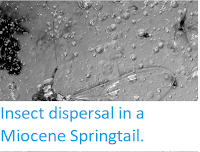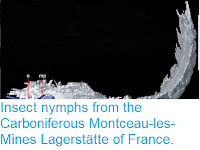Mayflies, Ephemeroptera, are an ancient group of insects related to the Dragonflies and Damselflies. They have a long aquatic larval stage followed by a short flying adult phase, which typically does not feed, simply emerging from the water, mating, and laying eggs at a new site. This adult form, called the imago may survive from a few hour to a few days, depending on the species. The Mayfly fauna of Europe has been extensively studied, but that of the Middle East is much less well known, with most studies that have been carried out concentrating on Saudi Arabia, Syria, Jordan, Israel and Turkey, while other countries have been at best poorly investigated. Very little work has been carried out on the Mayflies of Iran, and what publications there are mostly list species found elsewhere that also occur in Iran, and do so mostly in Persian, a language inaccessible to most outside researchers.
In a paper published in the journal ZooKeys on 10 April 2018, Jindřiška Bojková of the Department of Botany and Zoology at Masaryk University, Pavel Sroka and Tomáš Soldán of the Institute of Entomology at the Czech Academy of Sciences, Javid Imanpour Namin of the Department of Fishery at the University of Gilan, Arnold Staniczek of the Department of Entomology at the State Museum of Natural History Stuttgart, Marek Polášek, also of the Department of Botany and Zoology at Masaryk University, Ľuboš Hrivniak, also of the Institute of Entomology at the Czech Academy of Sciences, and of the Faculty of Sciences at the University of South Bohemia, Ashgar Abdoli of the Department of Biodiversity and Ecosystem Management at Shahid Beheshti University, and Roman Godunko, also of the Institute of Entomology at the Czech Academy of Sciences, and of the State Museum of Natural History of the National Academy of Sciences of Ukraine, describe a new species of Mayfly from Gilan Province in northwest Iran.
The new species is placed in the genus Procloeon, and given the specific name caspicum, in reference to the proximity of the Caspian Sea to the area where it was discovered. The species is described from ten female and one male mature larvae, collected in the Chelvand, Sefidab, and Karganrud rivers, close to their outflows into the Caspian Sea, in May 2016; the adults of this species are unknown. These are 7-8 mm in length and yellowish in colour, with darker brownish markings.
The new species is placed in the genus Procloeon, and given the specific name caspicum, in reference to the proximity of the Caspian Sea to the area where it was discovered. The species is described from ten female and one male mature larvae, collected in the Chelvand, Sefidab, and Karganrud rivers, close to their outflows into the Caspian Sea, in May 2016; the adults of this species are unknown. These are 7-8 mm in length and yellowish in colour, with darker brownish markings.
Procloeon caspicum, mature female larvae in (2) dorsal, and (3) lateral views. Bojková et al. (2018).
See also...
Follow Sciency Thoughts on Facebook.







